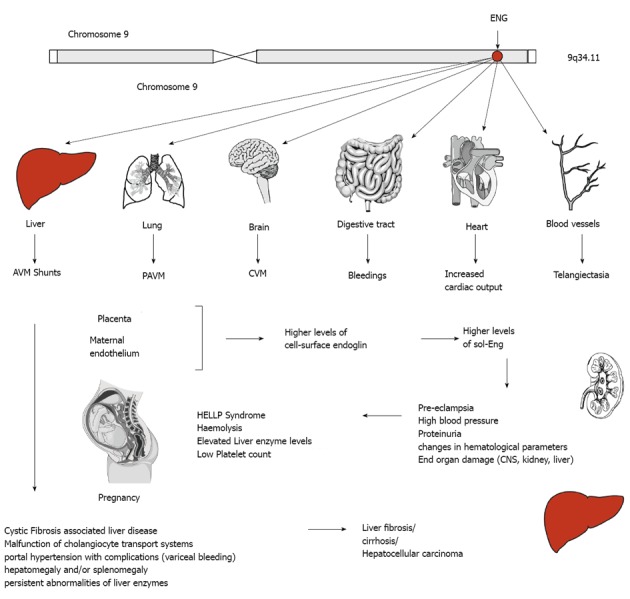Figure 6.

Endoglin and disease. The human endoglin gene (ENG) is located on the long arm of human chromosome 9. Mutations are inherited in an autosomal dominant manner and affect several organs. In liver, abnormal connection formed between blood vessels, arteriovenous malformations (AVM), malfunction of the cholangiocyte transport system gives rise to liver damage indicated by portal hypertension, persistent abnormalities of liver enzymes, hepatomegaly and/or splenomegaly, fibrosis, cirrhosis or even hepatocellular carcinoma. Intrahepatic connection between arteries and veins results in a large amount of blood bypasses for which the heart compensates by increasing the cardiac output resulting on long term in heart insufficiency. Similar arteriovenous (pulmonary AVM, cerebral AVM) are found in lung and brain. In the digestive tract bleedings occur and telangiectasias of blood vessels are found on the skin of the hands, face and mouth. During pregnancy, the placenta and the maternal endothelium produce higher levels of cell-surface endoglin that is shedded and leads to higher systemic concentration of soluble endoglin (sol-Eng) that leads to an imbalance of the antiangiogenic factors resulting in life-threatening obstetric complication (e.g., pre-eclampsia, HELLP syndrome).
